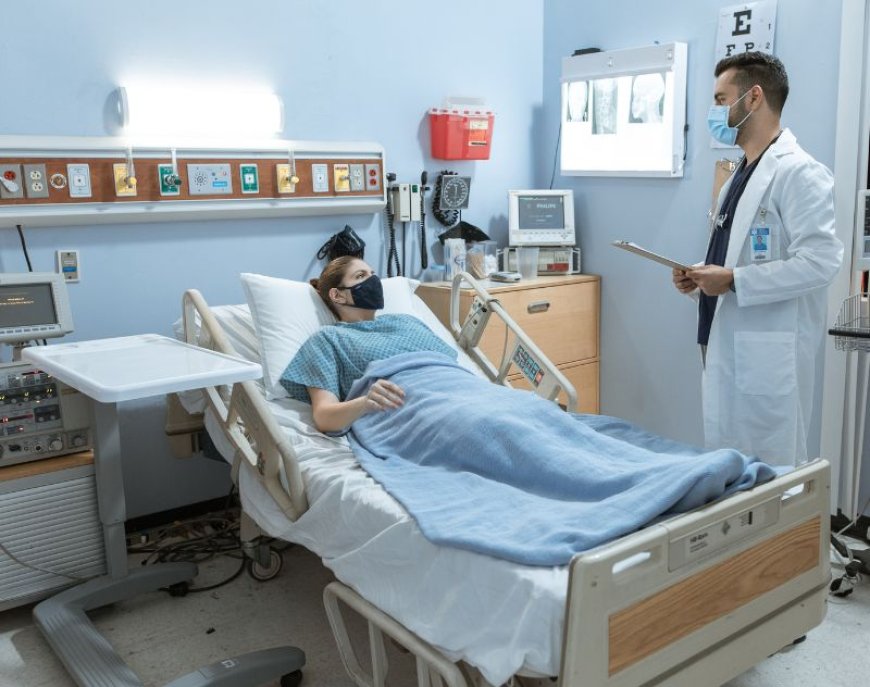Can Robotic Surgery In Cancer Treatment Reduce Hospital Recovery Time?
Discover how robotic surgery in cancer reduces recovery time and improves outcomes. Learn how Black Lion Hospital in Ethiopia is advancing surgical care.

In today’s fast-paced world, both patients and families want medical solutions that are not only effective but also efficient in terms of healing and recovery. One area that has significantly advanced in recent years is robotic surgery in cancer treatment. For working professionals, parents managing households, or fashion retailers who can’t afford long hospital stays, the idea of quicker recovery is highly appealing. But what exactly is robotic cancer surgery, how does it work, and can it reduce hospital recovery time? Let’s dive into the benefits, limitations, and real-world applications, including insights from institutions like Black Lion Hospital in Ethiopia.
What Is Robotic Surgery in Cancer?
Robotic surgery in cancer treatment refers to a minimally invasive procedure where surgeons use robotic systems to perform precise and controlled movements during surgery. These systems are not autonomous; they are controlled by expert surgeons via a console. The robot’s arms can rotate and move in ways human hands cannot, allowing for exceptional precision, especially in delicate cancer surgeries involving organs like the prostate, colon, or cervix. This technology allows for smaller incisions, reduced blood loss, and better preservation of surrounding tissues—key factors that contribute to quicker recovery and fewer complications.
How Robotic Surgery Differs from Traditional Surgery
Traditional open cancer surgery often requires large incisions, leading to more tissue damage, higher infection risks, and longer hospital stays. In contrast, robotic surgery in cancer uses tiny incisions and precise instruments, which reduce trauma to the body. Patients typically experience less pain, minimal scarring, and shorter recovery times. For busy individuals—be it a professional returning to work or a boutique owner managing day-to-day operations—this reduced downtime can make a significant difference in lifestyle and productivity.
Which Types of Cancer Can Be Treated with Robotic Surgery?
While not all cancers are treated this way, robotic surgery has proven highly effective for several cancer types:
-
Prostate Cancer: One of the most common uses, where precision is critical to avoid damaging nerves and preserving urinary and sexual function.
-
Colorectal Cancer: Enables better visualization of the colon and rectum, especially useful in confined areas like the pelvis.
-
Gynecologic Cancers: Robotic systems offer surgeons better control during hysterectomies or procedures involving ovarian and cervical cancers.
-
Lung Cancer: Some early-stage cases are treated with robotic-assisted thoracic surgery, minimizing the need for rib spreading and excessive tissue trauma.
At advanced institutions like Black Lion Hospital in Ethiopia, there is increasing interest in adopting robotic technology as part of their broader cancer treatment programs. The hospital is known for investing in modern tools and training to improve patient outcomes.
Benefits of Robotic Surgery in Cancer
Let’s break down how robotic surgery in cancer positively impacts recovery and overall patient experience:
1. Shorter Hospital Stay: Most robotic surgeries are performed using a minimally invasive approach, often allowing patients to leave the hospital within 1–3 days, compared to a week or more with traditional surgery.
2. Faster Return to Normal Activities: With less pain and smaller incisions, patients usually resume work or daily life much quicker. This is especially helpful for families with caregiving duties or professionals with tight schedules.
3. Lower Risk of Complications: Reduced blood loss and precise control mean fewer surgical complications, less chance of infection, and better wound healing.
4. Reduced Use of Pain Medications: Less trauma means less pain, which translates to lower dependency on opioids or strong medications.
5. Improved Surgical Precision: Surgeons can operate with a magnified, high-definition view, allowing them to remove cancerous tissues more effectively while preserving healthy ones.
What Role Does Black Lion Hospital in Ethiopia Play?
As one of the most well-known referral hospitals in East Africa, Black Lion Hospital in Ethiopia is actively upgrading its cancer care services. The hospital has made significant investments in diagnostics, oncology care, and surgical training. While robotic surgery is still an emerging option in the region, Black Lion is working with international health organizations and training programs to bring advanced techniques, including robotic surgery, into its future service offerings. For families and patients in Ethiopia, this development could reduce the need for costly medical travel abroad and improve access to world-class treatment closer to home.
Are There Any Limitations?
Although the benefits are clear, robotic surgery in cancer is not without limitations. It is not suitable for all patients or cancer types. Some tumors may be too advanced or widespread to treat with minimally invasive techniques. The cost of robotic systems is also a challenge for many healthcare providers, particularly in developing regions. Additionally, successful outcomes depend on the skill of the surgeon, which makes proper training and experience essential.
At places like Black Lion Hospital in Ethiopia, emphasis is being placed on improving medical training and investing in the future. As these efforts continue, more patients will benefit from high-tech solutions that combine precision with compassion.
What Does Recovery Look Like After Robotic Surgery?
Post-surgery recovery following robotic procedures is typically much smoother than with traditional methods. Here's what patients can expect:
-
Days 1–2: Most patients are walking within 24 hours and consuming a light diet.
-
Week 1: Pain is minimal and manageable with mild painkillers. Most can return home with post-operative instructions.
-
Week 2–3: Return to light work or home duties. Swelling and discomfort usually subside completely.
-
Weeks 4–6: Full recovery for many types of surgeries, depending on individual health and cancer stage.
For households managing kids or businesses, this quicker timeline makes robotic surgery a more attractive option.
Why This Matters to Your Lifestyle
For working professionals, families, and even fashion retailers, time is precious. Whether it’s managing a shop, handling clients, or caring for children, long hospital stays and painful recoveries can significantly disrupt daily life. With robotic surgery in cancer, the path to healing is faster, safer, and less physically demanding. Choosing a hospital that understands these needs—like Black Lion Hospital in Ethiopia—can make all the difference. The ability to access expert care with minimal disruption to your lifestyle helps you stay in control of both your health and responsibilities.
Final Thoughts
So, can robotic surgery for cancer reduce hospital recovery time? Absolutely. It offers numerous benefits, from quicker healing to lower complication rates, all of which contribute to a shorter hospital stay. While this technology may not be available in every hospital yet, its potential is undeniable. Institutions like Black Lion Hospital in Ethiopia are laying the foundation for its wider adoption, making advanced cancer care more accessible across diverse communities.
If you or someone you know is facing a cancer diagnosis, it’s worth asking about robotic surgery options. Understanding the available treatments can empower you to make better decisions that fit both your medical needs and your life. With the right care, recovery doesn’t have to mean losing weeks or months—it can mean healing smarter, faster, and stronger.

































